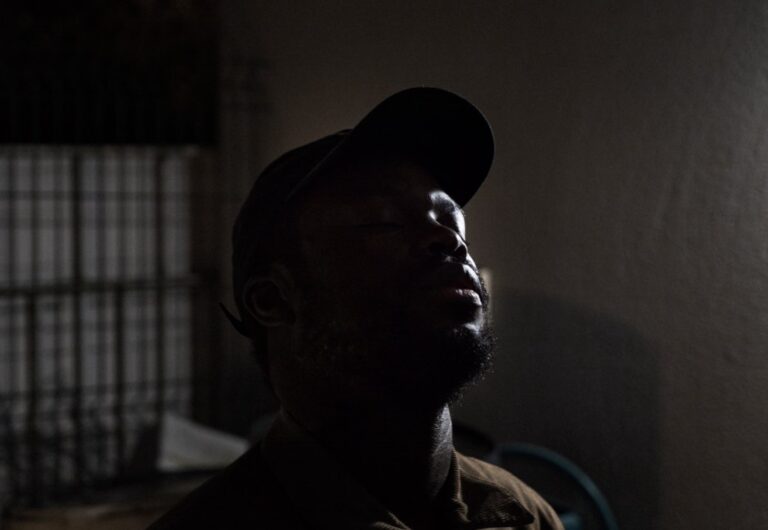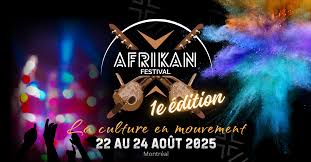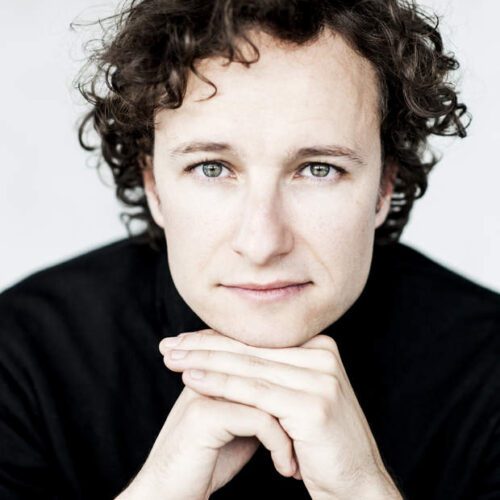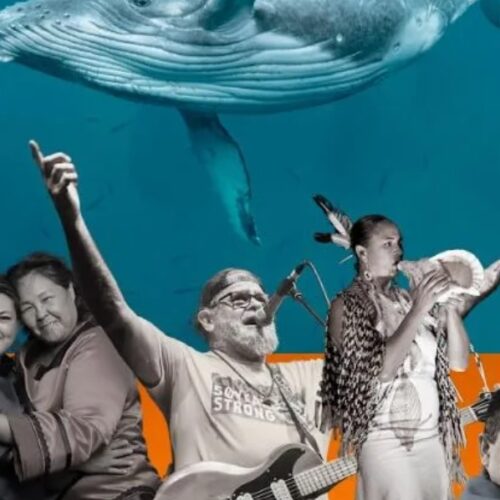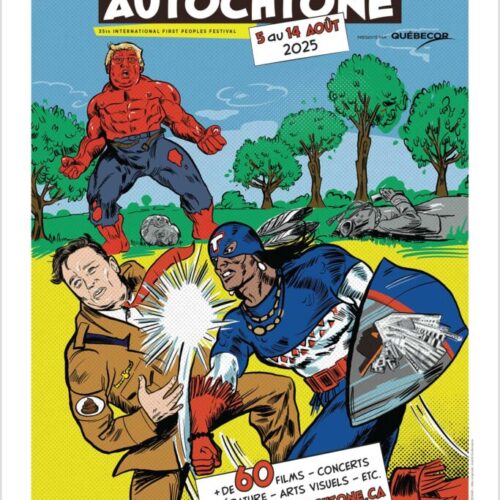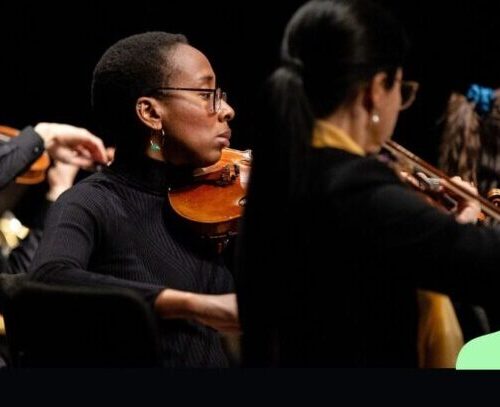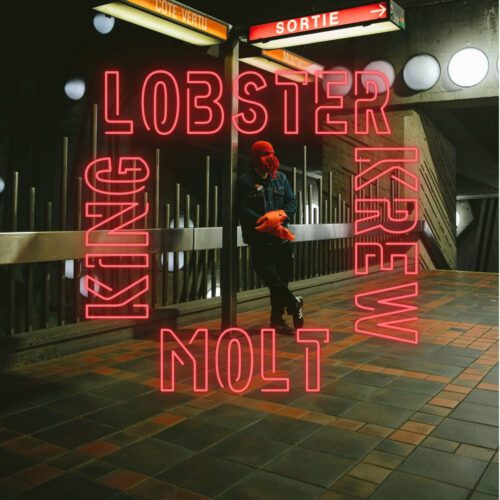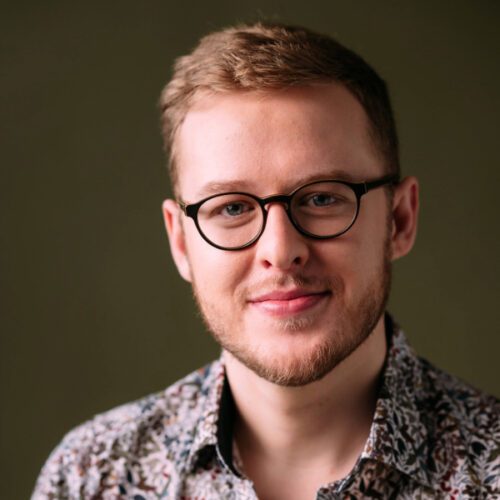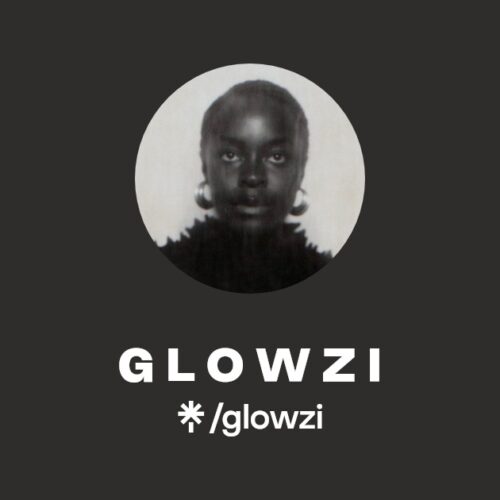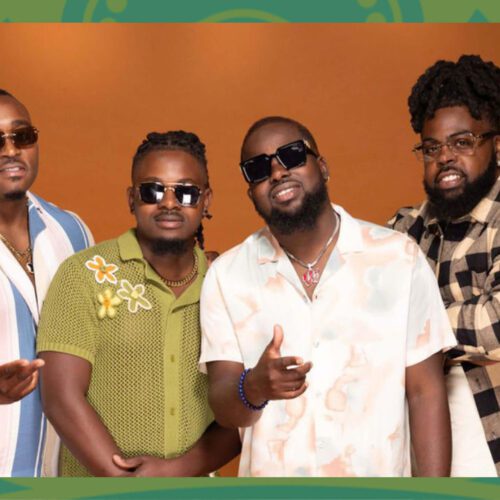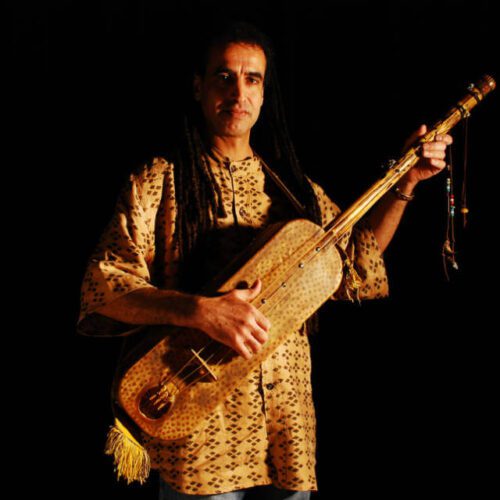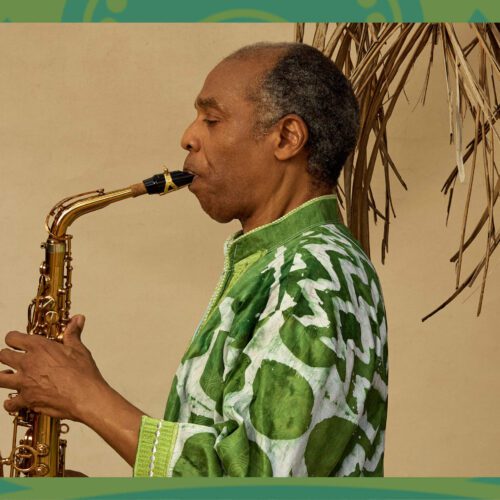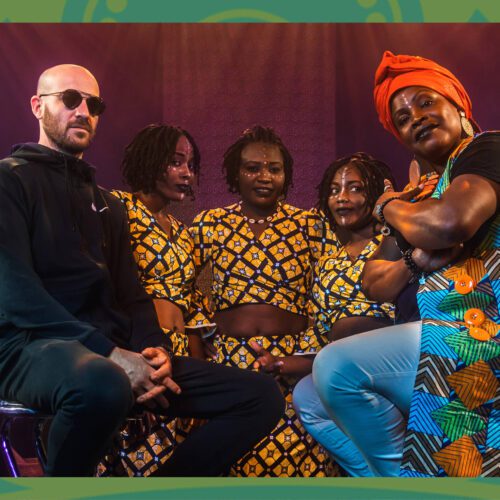Additional Information
Aho Ssan closes Akousma this Friday at Usine C, and PAN M 360 is interested in his work not only because he’s a rare Afro-descendant to shine in an electroacoustic world largely dominated by palefaces, but above all because his music is excellent.
Aho Ssan is the other real first name and artist name of Parisian Niamké Désiré. After studying mathematics, computer graphics and film, he began beatmaking and then electroacoustic music.
At a very young age, he won the Fondation France television prize for the soundtrack to the film Dissimulée by Ingha Mago (2015) and subsequently joined several projects linked to Ircam and GRM, French institutions involved in electroacoustic research.
A debut solo album was released in February 2020 on the Subtext Recordings label. Simulacrum was inspired by themes elaborated by Jean Baudrillard, notably on inclusivity and equality.
Recently, a second album of his own was released, Rhizomes evokes the rhizomatic thinking of Gilles Deleuze, Félix Guattari and also Édouard Glissant, who also evolved the concept. Artists from all over the world have been invited to take part, including Chilean-American Nicolas Jaar, a favorite among electronic music fans.
So many reasons to talk to him!
PAN M 360 : Still in 2023, few Afro-descendant artists are making their mark in the electroacoustic field and in fundamental research into acoustics, electronics, and you’re obviously a case in point, even a pioneer insofar as there aren’t very many of them. What do you think?
Aho Ssan : It turns out that when I started with the Simulacrum album in 2020, it’s true that most of the references in electroacoustic music or electronic music, quite simply, that I was listening to, there were very few Afros who were African or on European territory. But in the wake of George Floyd’s death, there was a collective on the Internet that started to create a database of Afro producers everywhere. That’s when I realized just how rich the production was. At the same time, I met KMRU, an artist from Kenya who now lives in Germany, and we made an album called Limen, a kind of ambient electroacoustic;
PAN M 360 : So yes, we’re seeing a lot more Afro-descendant human resources. But it’s not yet reflected in perceptions. It was the same thing with techno or house, which were initiated by black Americans and whose aesthetic was then taken over by white Westerners without today’s generations always being aware of it. The same cannot be said of musique concrète, now electroacoustic, which was initiated by white Europeans 75 years ago. In music today, white Western culture has been taken over by people from all over the world. And Afro-descendants are no exception, and you are an eloquent example of this.
Aho Ssan : We have a festival linked to GRM and which is very close to Akousma and we have a whole generation of which I am a part and which allows us to discover all the repertoire of previous generations.
PAN M 360 : But what led you to electroacoustic music? What is your background?
Aho Ssan : I started listening to more abstract music when I was a freshman in college. I was studying mathematics, physics and computer science at the time. And I had a friend who was using software like Max/MSP at the time, which is computer software for making music. I didn’t know anything about these programs at the time, so I started looking for artists who were using them to make music. And so I discovered music that required more attentive listening, and that’s how I also started to get involved in musique concrète. At the beginning, I made links with the music I liked, music that was a little more popular even if already quite experimental, I’m thinking of Autechre, Flying Lotus or other artists on the Brainfeeder label and more.
PAN M 360 : So you were willing to look further into more experimental electronic music.
Aho Ssan : I understood the idea of musique concrète at the time, but I’d never really listened to it. As soon as I discovered this software, I discovered another world, and I started looking everywhere, thanks to the Internet. You start listening to things, discovering Bernard Parmegiani, Pierre Henry and so on. And in the same way, the people who went on and influenced me a lot.
PAN M 360 : And so, you didn’t pursue mathematics?
Aho Ssan : I did a degree in mathematics. And after that, I wanted to have something more artistic because that’s really where I saw myself being. So I studied design and computer graphics before switching to film studies. But I didn’t study music.
PAN M 360 : But you do have a digital background. You developed your musical vocabulary in this universe.
Aho Ssan : When I started doing this, I was using software that’s rustic today, like Fruity Loops at the time. On the Internet, there weren’t many tutorials like there are now. I had to do a lot of research, spending hours and hours in the software trying to understand why this button activates this or that, what compression is, what reverb is, and so on. I was trying to reproduce what I liked at the time, and then trying to find my own language;
PAN M 360 : Vous avez grandi à Paris, quelles sont vos origines africaines?
Aho Ssan : My parents are from the Ivory Coast, but my grandfather, who died quite young, was a trumpeter originally from Ghana. My parents didn’t really speak English, but still inherited the culture of Ghana. At home, we listened to a lot of highlife and afrobeat, which for me is the best music there is, even if I listen to very little of it today. So I try to bring groove into my music, even if it’s a deconstructed groove, because I also incorporate other music that I really like. And then, I’d also say that I grew up with an older brother and sister who listened to a lot of popular music at the time; as a result, through them I got to know the French hip-hop of the 90s and so my musical culture has also been marked by this period. And I think you can feel this hip-hop influence even more in Rhizomes, and you can also feel the jazz side, Sun Ra in particular, which my father also listened to at home. And there’s also this big broken-beat influence whose leader was Flying Lotus.
PAN M 360 : You speak of “deconstructed groove” in your music, of Afro jazz or Afro African music being quoted and after that, processed and transformed. But still?
Aho Ssan : Yes, I incorporate music inspired by groove artists but also experimental ones, who played a lot of different instruments that weren’t particularly heard in popular music or even jazz. I’m thinking of Alice Coltrane’s harp, for example, or traditional Indian instruments. In this sense, the groove is deconstructed in another proposal from the electroacoustic family.
PAN M 360 : What are you playing at AKOUSMA?
Aho Ssan : I’ll be presenting music linked to the Rhizome process. I did a piece with the musical research group, GRM, who commissioned a piece from me and so it’s called The Falling Man, in reference to that famous photo by Richard Drewof the man who threw himself off the World Trade Center. Before it became the Rhizome album, these were multi-channel pieces I’d created for GRM, which I played in several venues.PAN M 360 : What are you presenting at AKOUSMA?
PAN M 360 : And so it’s not exactly a piece from the Rhizomes album.
Aho Ssan : The idea was to make it a three-part piece. There’s the first part that comes with the Rhizome book. It’s not in the album that you can listen to on Spotify or Apple Music, those are extras. It’s the first part where I wanted to develop this sound simulation of someone throwing himself into the void : The Falling Man.
The second part is more fantastic, more phantasmagorical. It’s the journey of a character who loses his life, and it’s called Till the Sun Down.
The third part is a sound I made with Lafada, a French artist. I decided to include La Fada’s voice on the last part, because I think it adds hope to the journey.
PAN M 360 : For its broadcast at Usine C, you probably adapted this music to Akousma’s 30 speakers.
Aho Ssan : Because it’s a bit special, it’s a bit like doing multichannel music, at least from my point of view, is that generally, me, I start with stereo because that’s what my software allows me to do or mono. And then you broadcast in multichannel, so you start to create space from these things in stereo. And that creates another room, another space, something physical and something different. And then, when it becomes an album, it goes back to stereo;
PAN M 360 : Lastly, was the title of your new album inspired by Rhizomes, the famous book by Gilles Deleuze and Félix Guattari, which refers to a structure constantly evolving in all directions at all levels?
Aho Ssan : Yes, exactly, but it also comes from one of my favorite authors, the poet and philosopher Édouard Glissant, who took up the concept. It’s a bit like the journey of my pieces, which evolve formally, designed for different listening, different destinations.
